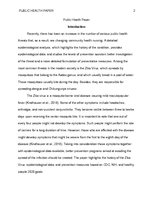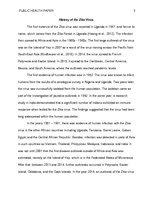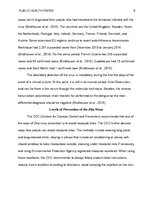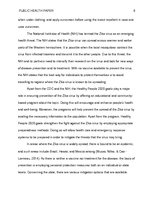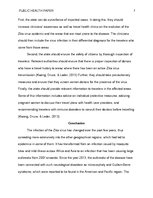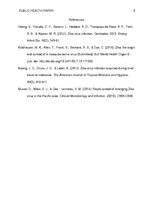-
Public Health Paper
Conclusion
The infection of the Zika virus has changed over the past few years, thus spreading more extensively into the other geographical regions, which had led to epidemics in some of them. It has transformed from an infection causd by mosquito bites and mild illness across Africa and Asia to an infection that has been causing large outbreaks from 2007 onwards. Since the year 2013, the outbreaks of the disease have been connected with such neurological disorders as microcephaly and Guillain-Barre syndrome, which were reported to be found in the American and Pacific region. The transmission of the virus in the future may likely result from the spreading of the Aedes mosquito vectors despite the fact that there may be rare instances of transmission from one person to another. Apart from infections through mosquito bites, the infection has been and may continue to be as a result of international migration. Therefore, there should be appropriate preventive measures taken both by states and by individuals in order to ensure that the infections are at a minimum.
…
Type Research paper Level University Style APA Sources 3 (References no older than 5 years) Language English(U.S.) Description With the recent public health threat that are challenging and changing the way community health nursing is provide please choose any of the recent health threat such as Zika, Dengue and Chikungunya please present an epidemiological analysis of any of these conditions. The analysis must include the following; 1. History of the condition 2. Epidemiological data according to what was study in week two 3. Application of the levels of prevention according to the CDC or the NIH and based on healthy people 2020 goals. The assignment must be presented according to the stated guidelines in the syllabus on an Arial 12 font, 3 references and a minimum of 1500 words. All paper submitted must be in APA format according to Publication Manual American Psychological Association (APA) (6th ed.). Spacing Double


